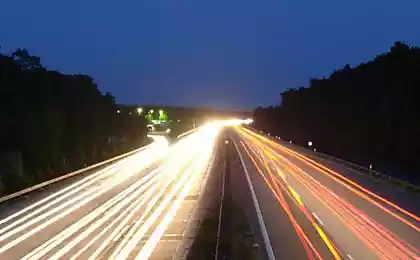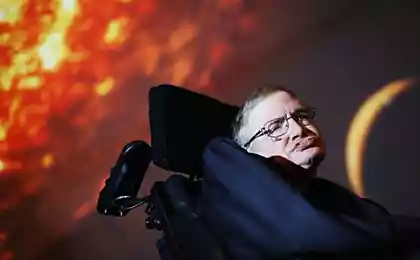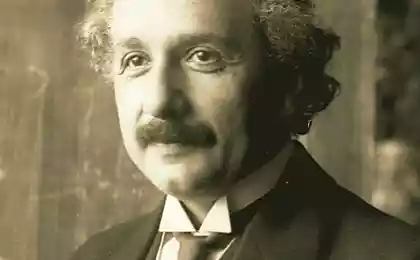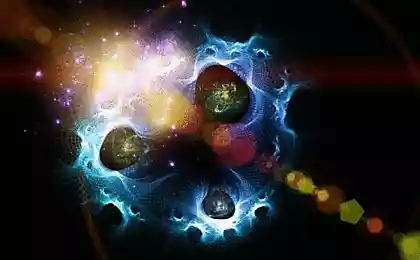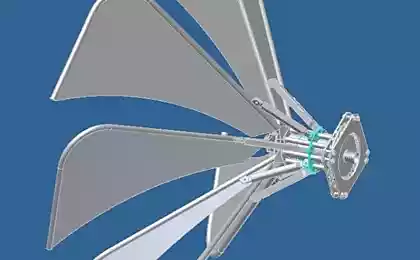764
Four ways to overcome the universal speed limit

When albert Einstein first established that light travels with same speed in our Universe, it is, in fact, set the speed limit on 299 792 458 meters per second. But this is not the end. Actually this is only the beginning. To Einstein's mass — the atoms that you, me and everyone around up. and the energy was treated as a separate variable. But in 1905, Einstein forever changed the way physical perception of the Universe.
The special theory of relativity bound mass and energy together in a simple but fundamental equation E=mc^2. This little equation means that no mass can't move as fast as light or faster.
The closest mankind has come to the limit of the speed of light in powerful particle accelerators like the Large hadron Collider and Tevatron. These enormous machines accelerate subatomic particles to 99.99% the speed of light, but, as explained by Nobel laureate in physics David gross, these particles never reach the cosmic speed limit.
This would require an infinite amount of energy, and the mass of an object would become infinite, which is impossible. (Particles of light photons can move at the speed of light because mass does not have).
After Einstein, physicists have discovered that some values can reach sverhloyalnoy (or superluminal) speeds and continue to abide by the cosmic rules established by the special theory of relativity. Although this does not disprove Einstein's theory, it gives us an insight into the peculiar behavior of light, and quantum space.
The light equivalent of a sonic boom When objects move faster than the speed of sound, they create a sonic boom. Thus, in theory, if something moves faster than the speed of light, it should produce something like a "light strike".
In fact this light impact occurs daily around the world — it can even be seen with eyes. It is called Cherenkov radiation (Cherenkov effect — Vavilov) and looks like a bluish glow inside the nuclear reactor (in the picture below of the Advanced test reactor).

Cherenkov radiation is named after Soviet scientist Pavel Alekseyevich Cherenkov, who first measured it in 1934 and was awarded the Nobel prize in physics in 1958 for his discovery.
Cherenkov radiation glows because the core of the reactor submerged in water for cooling. In water light travels slower, its speed is 75% of the speed of light in the vacuum of space, but electrons, which are generated during the reaction inside the nucleus, moving in the water faster than light.
Particles such as the electrons, which are superior in the speed of light in water or any other medium like glass, creating a shock wave similar to a shock wave from a sonic boom.
When the rocket, for example, passes through air, it generates a pressure wave in front of him, pushing the air at the speed of sound, and the closer the missile breaking the sound barrier, the less time the waves to get away from the path of the object. Reaching the speed of sound, the rocket smallive waves together, creating a shock front, which leads to a powerful sound punch.
Similarly, when electrons move through water faster than the speed of light in water, they generate a shock wave of light that occasionally glows blue, but can glow in ultraviolet light.
Although these particles move faster than light in water, but in reality they do not violate the cosmic speed limit of 300,000 km/s.
When the rules are not taken into account
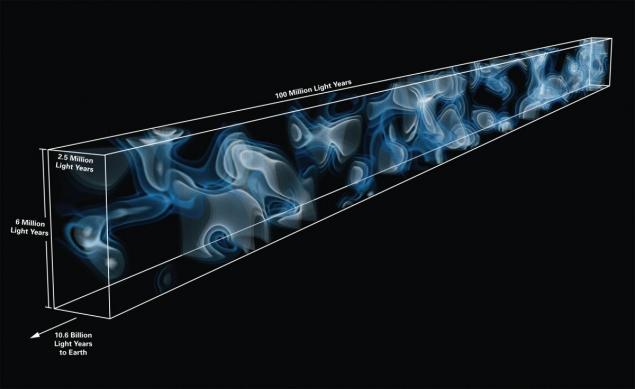
Do not forget that the special theory of relativity says that nothing with mass can not move faster than the speed of light; and how physics can say, the universe follows that rule. But how about the fact that without mass?
Photons, by their nature, can not surpass the speed of light, but particles of light — is not the only massless things in the universe. Empty space contains no material substance and therefore has no mass, by definition.
"Because nothing can be more empty than the vacuum, it can expand faster than light because no material object does not violate the light barrier, — says astrophysicist-theorist Michio Kaku. — Thus, an empty space can certainly move faster than light".
Physicists believe that it happened immediately after the Big Bang in the epoch of inflation, which was first suggested by physicists Alan Guth and Andrei Linde at the 1980s. For the trillionth trillionth of a second, the universe doubled in size and as a result has expanded exponentially very quickly, much higher than the speed of light.
Quantum entanglement cuts corners Quantum entanglement seems difficult and frightening, but in the simplest sense, the confusion is just a way of interacting subatomic particles. And what is most interesting in this phenomenon is the fact that this process can take place faster than light.
"If two electrons to keep close enough, they will begin to vibrate in unison, in accordance with quantum theory. Then, if you divide these electrons by hundreds or even thousands of light years, they will still communicate with each other. If you shake one electron, the other will immediately feel the vibration, the speed of light. Einstein thought that this phenomenon should disprove quantum theory because nothing can move faster than light".
But in 1935, Einstein, Boris Podolsky and Nathan Rosen tried to disprove quantum theory in the course of a thought experiment, which Einstein called "spooky action at a distance".
Ironically, their work formed the basis of the so-called EPR paradox (Einstein — Podolsky — Rosen), which describes this instant communication in the process of quantum entanglement. This, in turn, can serve (and gradually down) the basis of many advanced technologies such as quantum cryptography.
Dreams of a wormhole
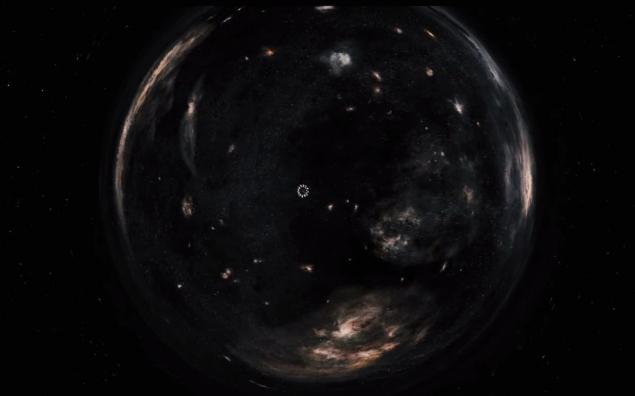
Because nothing with mass can not move faster than light, you can say goodbye to interstellar travel — at least in the classic sense, missiles and conventional operations.
Although Einstein and buried our dreams of deep space with his special theory of relativity, he gave us new hope for interstellar travel with his General theory of relativity in 1916.
While the special theory of relativity "marries" mass and energy, the General theory regarding the ganging together of time and space.
"The only possible way to overcome the light barrier may be hidden in the General theory of relativity and the curvature of space-time — says Kaku. Is the curvature we call a "wormhole", and it could theoretically allow us to travel great distances instantly, literally piercing through the fabric of space-time."
In 1988, physicist Kip Thorne was a scientific consultant and producer of the film "interstellar" — have used the equations of General relativity to predict the possible existence of wormholes, which would open the way for us in space. But in his case this Krotov holes required were strange exotic matter that would support them in the open.
"Today is an amazing fact that exotic matter can exist, thanks to the strange laws of quantum mechanics," writes Thorne in his book "the Science of "Interstellar".
And this exotic matter can ever be created in laboratories on Earth, though in small quantities. When Thorne proposed his theory of a stable wormhole in 1988, he called on the community of physicists to help him determine whether in the universe to exist quite exotic substances to make the existence of wormholes is possible.
"It has generated a lot of research in the field of physics; but today, thirty years later, the answer is still unclear, writes Thorne. As long as everything goes to the fact that the answer is "no", but We are far from the final answer." published
Source: hi-news.ru




